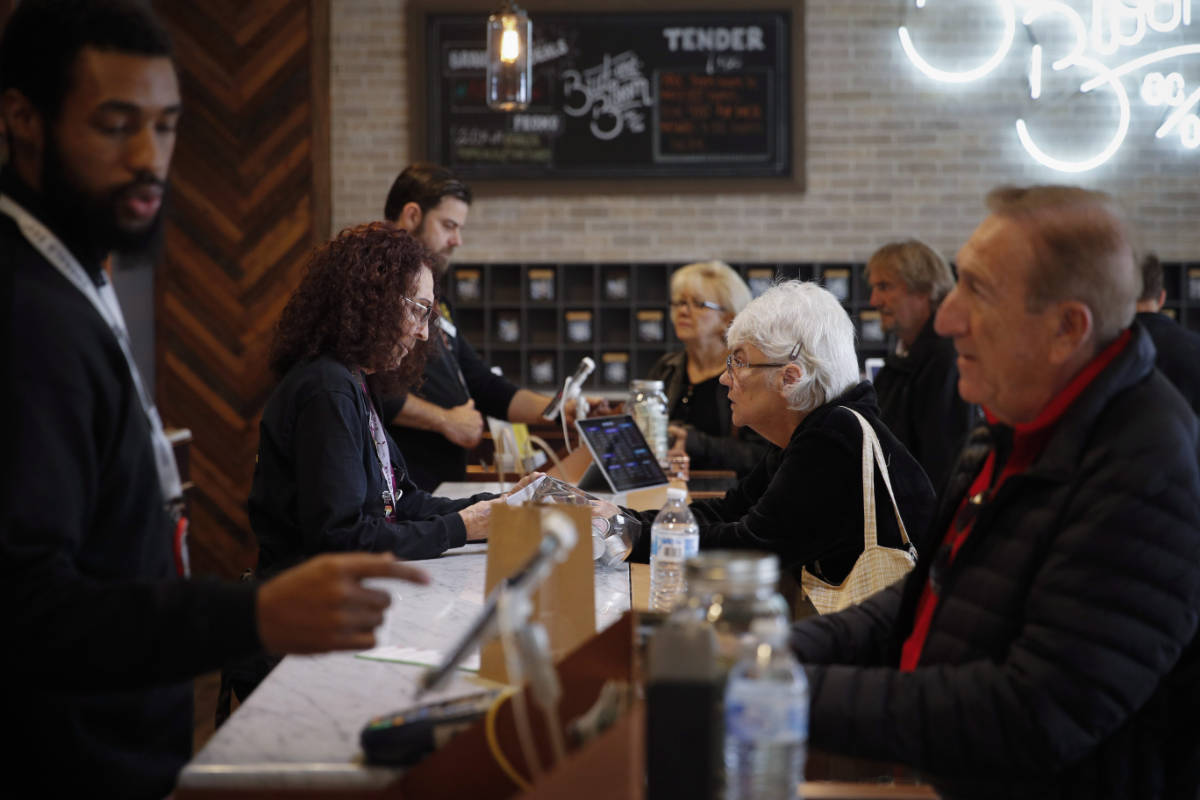If you’re a senior considering exploring cannabis use – either for the first time or the first time in a long time – you’re not alone.
According to Statistics Canada’s National Cannabis Survey, seniors are the age group showing the most growth in cannabis use.
While at 7 per cent, reported cannabis use is less common among seniors than it is in other age groups (10 per cent for ages 45 to 64; 25 per cent for ages 25 to 44, and 26 per cent for ages 15 to 24), cannabis consumption among seniors has been accelerating at a much faster pace than among other age groups.
Consider, for example, that in 2012, fewer than 1 per cent of seniors, or about 40,000, reported using cannabis – a far cry from 2019 estimates indicating that more than 400,000 seniors have used cannabis in the past three months.
More than one-quarter of seniors using cannabis are new users
Statistics collected from the second and third quarters of 2019 recorded about 578,000 new cannabis users of all ages – those who reported trying cannabis for the first time in the past three months.
However, first-time use increases with age. While 10 per cent of cannabis consumers aged 25 to 44 were new users in that time, the same was true for more than one-quarter of cannabis consumers aged 65 and older.
At the same time, seniors were less likely to report daily or almost daily use compared with those under age 65.
Seniors more likely to use cannabis for medical reasons
Asked to provide their main reason for using cannabis – for non-medical use, for medical use (with or without a medical document), or for both medical and non-medical use – medical use was more common at older ages, while non-medical use predominated at younger ages.
More than half of seniors aged 65 and older reported using cannabis exclusively for medical reasons, while the remaining seniors were evenly split between non-medical only (24 per cent) and both medical and non-medical reasons (24 per cent).
Responding seniors were also the most likely – 41 per cent – to obtain cannabis exclusively from legal sources, compared to an estimated 28 per cent of Canadian cannabis users generally.
Growing cannabis, either themselves or by someone else, was a supply source for about 8 per cent of consumers.
While legalization, and easy access to legal sources of cannabis, has likely influenced some of the growth among seniors, so have factors such as ongoing research into potential benefits and reduced stigma, particularly with medical cannabis, suggests a recent Harvard Medical School Health Blog.
A recent study in the Journal of the American Medical Association that looked at cannabis use among older adults found use steadily increasing.
The prevalence of past-year use increased from 2.4 per cent to 4.2 per cent from 2015 to 2018, numbers that author Peter Grinspoon, MD says is consistent with other research and with reports from physicians who recommend cannabis in their daily practices.
Reported reasons for using cannabis included pain, insomnia, neuropathy and anxiety.
While research into medical cannabis use specifically for older adults is relatively new territory, Dr. Grinspoon says it’s typically well-tolerated.
However, as with all medications, potential side effects must be considered, such as potential medication interactions, so it’s essential to communicate with medical providers about cannabis use.
For those new to cannabis, or who haven’t consumed for some time, the strength of the product can also raise potential concerns, underscoring the importance of speaking to a knowledgeable professional who can explain about the various active components and their potential effects.
Why?
Today’s cannabis can be a lot more potent than in the past, so even if you used cannabis in your youth, you might have different experience if you jump in to today’s product.
Looking back to the 1960s, the level of THC – the main psychoactive compound that gives you the “high” – was typically around two per cent. THC levels began climbing in the 1980s, with a percentage of more than 10 per cent reached for the first time in the 2000s. Currently the average is even higher.
Why the increase?
Not only was the 1960s cannabis often unrefined but so were the growing conditions. Today, legal growers are taking advantage of better soil conditions, light, temperature and humidity, in addition to selective breeding to develop cannabis with higher amounts of THC or combining strains to create brand new strains of cannabis.
At the same time, many strains have also been developed with much lower levels of THC, emphasizing other elements, such as CBD, which have been emphasized for its medical properties, without the “high.”
Start low, go slow
If you choose to consume cannabis, how much you consume and how quickly you consume can influence whether you experience adverse effects, Health Canada notes.
“Take your time to understand how your body reacts to cannabis as everyone’s response is different. Until then, start low and go slow to minimize health risks and the risks of overconsumption.”
You’ll also want to start with a low amount of THC and wait to feel the effects before taking more – the concentration of THC is on the label, so choose products with a low amount of THC and an equal or higher amount of CBD.
And remember, certain cannabis extracts contain a high concentration of THC. New or occasional users are best to avoid these to minimize the likelihood of greater levels of impairment and adverse effects.

